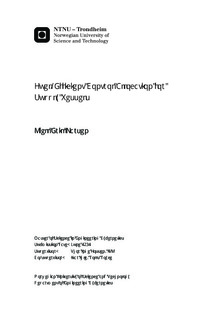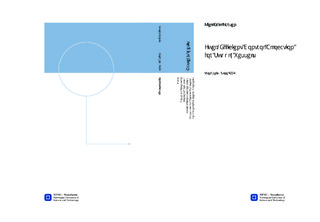| dc.contributor.advisor | Fossen, Thor Inge | nb_NO |
| dc.contributor.advisor | Ihle, Ivar | nb_NO |
| dc.contributor.author | Larsen, Kjell Erik | nb_NO |
| dc.date.accessioned | 2014-12-19T14:06:26Z | |
| dc.date.available | 2014-12-19T14:06:26Z | |
| dc.date.created | 2012-11-11 | nb_NO |
| dc.date.issued | 2012 | nb_NO |
| dc.identifier | 567050 | nb_NO |
| dc.identifier | ntnudaim:7052 | nb_NO |
| dc.identifier.uri | http://hdl.handle.net/11250/260759 | |
| dc.description.abstract | The motivation behind this thesis was to find a control allocation algorithm to reduce the power consumption onboard maritime vessels. As more and more maritime operations starts to go at deeper sea levels the further away from the shore the maritime vessels goes. The need to reduce power consumption to be able to operate at a longer time period out in the sea can save maritime businesses for increased costs during missions a deeper sea levels.To reduce power consumption onboard a typical supply vessel used in the North Sea a power efficient control allocation method was designed. A simulation model was designed to be able to test the efficiency of such a control allocation method. Conditions such as wind, current and waves were modelled using standard models for North Sea conditions. A typical model for vessel dynamics were modelled to be able to see the effect of the environmental loads acting on supply vessel. Thruster dynamics such as losses and characteristics during were added for a more realistic condition onboard the vessel. Inflow velocity into the propeller blades were simulated as this reduces the potential thrust production able at a certain shaft speed. Realistic rate in which the propellers could rotate were added. As the inflow into the propeller blades effects the efficiency of the thruster, the control allocation method was designed to reduce the possibility of one thruster to interact with another thruster by avoiding water flow from one thruster into the other thruster. The control allocation method was thus designed with several allowed thrust production zones. Each of these sectors were monitored by using a supervisor to find the most power-efficient sector. To reduce power usage within each sector, the control allocation used each thrusters thrust-to-power relation to evenly distribute the power amongs the avaiable thrusters onboard the supply vessel. The control allocation method would then reduce the use of thrusters with poor thrust-to-power relation by using the ones with better relation. If one thruster has high power consumption, the idea behind the control allocation method would be to redistribute this produced thrust to the other thrusters avaiable. This was only done if the required force calculated by the controller was obtained.The method designed was a supervisory control allocation as described in chapter~ref{chap_control_allocation}. It was shown in the Simulation Cases 1-2 that the power was minimized by still regaining the desired position of the supply vessel. If a more power-efficient sector was found on the other side of a forbidden thrust production zone, the thrusters would swipe through this zone as fast a possible. This was confirmed experimentally in the MCLab at MarinTek at NTNU. The bau azimuth onboard the supply vessel used, had a very poor thrust-to-power relation compared to the stern pods. This bau azimuth was rarely used due this relation, and was only used if necessary, and was confirmed both in the simulation cases and experimentally. The supervisory control allocation method was confirmed to be much more power-efficient compared to a explicit control allocation method in the simulation study. This showed the potential of the supervisory control allocation method to obtain a much better power solution compared to other traditional solutions of the control allocation problem. | nb_NO |
| dc.language | eng | nb_NO |
| dc.publisher | Institutt for teknisk kybernetikk | nb_NO |
| dc.subject | ntnudaim:7052 | no_NO |
| dc.subject | MTTK teknisk kybernetikk | no_NO |
| dc.title | Fuel-Efficient Control Allocation for Supply Vessels | nb_NO |
| dc.type | Master thesis | nb_NO |
| dc.source.pagenumber | 133 | nb_NO |
| dc.contributor.department | Norges teknisk-naturvitenskapelige universitet, Fakultet for informasjonsteknologi, matematikk og elektroteknikk, Institutt for teknisk kybernetikk | nb_NO |

